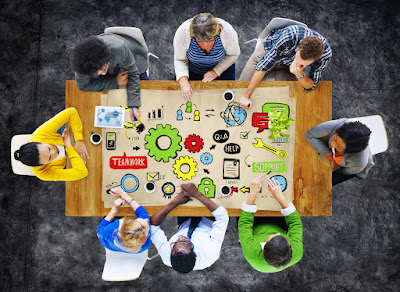Lesson 14
Maximizing the use of LCD
projector and the chalkboard
- An LCD projector is a type
of video projector for displaying video, images or computer data on a
screen or other flat surface.
- Because they
use small lamps and the ability to project an image on any flat surface, LCD
projectors tend to be smaller and more portable than some other types of
projection systems. Even so, the best image quality is found using a blank
white, grey, or black (which blocks reflected ambient light) surface, so
dedicated projection screens are often used.
Features of LCD Projectors
- Since its invention in the
seventies, there have been many developments that the technology has met.
- There are many
classifications of LCD projectors based on the purpose of use. They can either
be projectors for conference rooms, fixed installation projectors and
multipurpose projectors.
- They come with zoom lens
using which you can adjust the size of the image from LCD projector.
- The contrast of the LCD
projector image is higher as compared to the other projector types.
Advantages of LCD Projectors
Cost
of LCD Projectors
-
When compared to the other projector types like DLP projectors, they are much
cheaper. The cost of an liquid crystal display projector can cost around Rs.18,
000 and more based on the features it possesses.
Sharp
Images
- Though the DLP projectors also provide sharp images, the LCD ones are better in
comparison. While there were problems in projecting sharper images previously,
technological advancements have reduced the trouble to a great extent.
Greater
Zoom Magnification
- The presence of zoom lens make it easier to further zoom the image formed on
the screen. It is also possible to digitally adjust the images.
Less
Power Consumption
–
This is important for an electrical device and the LCD projector provides this
benefit.
Disadvantages of LCD projectors
- Limited
lifetime of
LCD panels appears to be one of the biggest disadvantages of LCD structure
projectors. The colors tend to degrade and the screen tend to get yellow after
intensive usage of LCD projector.
- Contrast
isn't very
high, problem of blacks - second huge disadvantage of LCD structure
projectors. Contrast is a very debatable issue and highly depends on the
method by which it is examined. However, do not rely upon the high contrast of
the declared values for the LCD projectors, because same black color (because
of spreading out in most home cinema screens) is more like gray.
- Screen-door
effect.
High resolution LCD structure projectors might produce so called screen-door
effect - it is when the lines between pixels become visible (and as a result
seperate pixels become visible), and this effect becomes distracting.
- Dust
issues.
Due to dust accumulation contrast ratio might be reduced up to 50% over time.
- Dead
pixels.
You might heard about it while talking about LCD monitors. The same issue comes
to LCD projectors. This happen when one pixel becomes permanently off or on. If
it is only a single pixel - you might even not notice it. But after first pixel
is dead, usually pixels around dead one stops responding too over time. It can
be fixed by replacing LCD panel, but usually it is wiser to buy new projector
instead (maybe DLP structure this time).
A chalkboard is a
reusable writing surface on which text or drawings are made with
sticks of calcium sulfate or calcium carbonate, known, when used for
this purpose, as chalk.
Except in
extremely deprived classrooms, every classroom has a chalkboard. In fact, a
school may have no computer, radio, tv, etc. but it will always have a chalkboard.
1.
Write clearly and legibly on the board. Take note that there are children in
the last row.
2.
Have a hard copy of your chalkboard diagram or outline.
3.
Do not crowd your notes on the board.
4.
Make use of colored chalk to highlight key points. Color will also make your
board work appealing.
5.
Do not turn your back to your class while you write on the chalkboard. Write
side view as you talk. Do not lose your eye contact with the class.
6.
For the sake of order and clarity, start to write from the left side of the
board going right.
7.
If you teach the grades and you think the lines on the chalkboard are needed
for writing exercise, then provide the lines for your board.
8. Look at your
board work from all corners of the room to test if pupils from all sides of the
room can read your board work.
9. If there is
glare on the chalkboard at a certain times, a curtain on the window may solve
the problem.
10.
If you need to replace your chalkboard or if you are having a new classroom
with new chalkboard suggest to the carpenter to mount the chalkboard a little
concave from left to right to avoid glare for the pupils’ benefit.
11.
If you need to have a board work in advance or that need to be saved for
tomorrow’s use(say a quiz or sophisticated diagram), write “Please Save” and
cover the same with a curtain.
12.
Make full use of the chalkboard. It may be a traditional educational technology
but it serves its purpose very well when used correctly.
Chalkboard
Techniques
By: James W.
Brown (1969)
A. Sharpen your chalk to get
good line quality.
B. Stand with your elbow high.
Move along as you write.
C. Use dots as “aiming points”. This keeps
writing level.
D. Make all writing or
printing between 2 and 4 inches high for legibility.
E. When using colored chalk,
use soft chalk so that it can be erased easily.

































